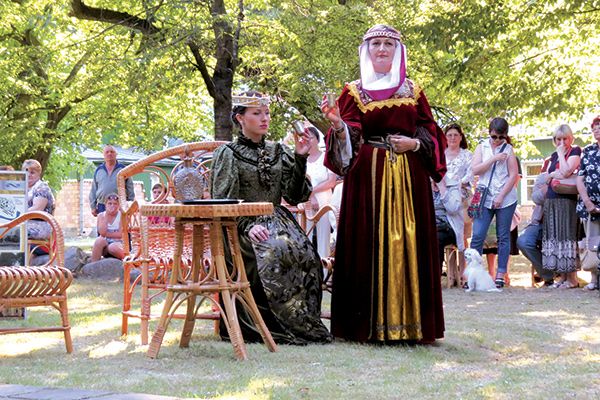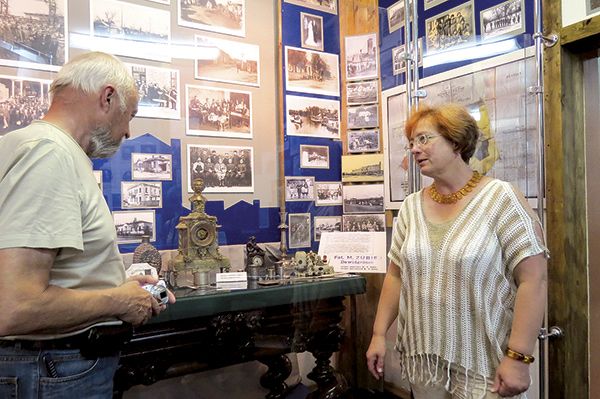
Mankovichi Park: the show dedicated to the 60th anniversary of the museum and 130th anniversary of the park
The staff at the local history museum say that the coast began directly at the edge of the modern city park, which is at sea level. The ethnographic museum in the village of Tereblichi in the Stolin District has a unique exhibit, an anchor from the time of Herodotus, lifted from the bottom of the Olmanskie bog. Historians explain its origins on the trade route from the Varangians to Greece.
The origins of the city’s name lie in its geographical location. Wikipedia has the official version, which describes the first mention of the city in chronicles of 1555. They tell the story of a fisherman who caught 100 tench (linki in Russian) which became the basis of the name of Stolin. The director of the museum, Svetlana Verenich, tells us of a more ancient legend, “The Stolin District was the place of settlement of ancient princes. It is where the Horyn River joins the Pripyat, and from there to the Dnieper and on to the Black Sea. Stolin could come from word ‘stol’ (table) denoting a place of meeting for the Horyn princes.”
Nature, archaeology, ethnography and, of course, the history of Stolin is displayed in six halls in the museum. There is a unique collection of stone axes, weapons, household items, family trees and a model of the castle of the Radziwill family. A large part of the exhibition is given over to the family, whose ancestors were amongst the most powerful princes in the region. Svetlana Verenich tells us what has remained and, unfortunately, what has been lost including a park, distillery, railway, fishery and guesthouse that has been converted into an art school.
While Stolin itself did not belong to the Radziwills, Mikolaj ‘the Black’ Radziwill inherited the small town which later received the prefix ‘David’ in honour of the ancient prince. The park was founded by Maria Dorothea Radziwill in 1885 and after this became the family estate. Svetlana explains how it was created in the European style, “When Maria searched for a place for the new estate, she was attracted by this district. There was a good view of the Horyn, sufficient forest, which was later augmented with exotic trees. Weymouth pine, the Caucasian and white firs, European larch, Engelmann spruce and red maple grow here today. There were arbours and glades arranged for relaxation and to avoid the mosquitoes.”

Director of the museum Svetlana Verenich conducts an excursion
Well-developed agriculture, hunting and fishing provided the Radziwill family with provisions, while behind Mankovichi Park there was a beautiful garden. Its fruits were used for processing in the distillery, on the site of which is now a modern distillery. The fruit wines of the family were served to European and Russian nobility coming here for hunting breaks. There was also a brick-works, which has not remained, and ancient stables with thoroughbred horses, particularly enjoyed by the keen rider, Princess Isabella.
The park faced its first blow at the beginning of the 20th century with the start of the First World War. Centuries-old oaks were cut down and few of them remain today. The destruction of ancient trees continued during the Second World War. From 50 hectares less than 23 remain. Later all the possessions of the noble family passed into public ownership. The stables however had not existed for a long time but several buildings were made habitable as dwellings. The castle, which during the war years had been occupied by fascist command, was burnt by partisans.
Today the historical heritage of the Stolin District is protected: the director of museum of local history, the main keeper of funds, research assistant and custodian are all guardians of its history. They realise that the park needs an expert in forests, who knows what should be preserved so that this unique and special landscape will be preserved for the future.
By Alexander Mityukov











